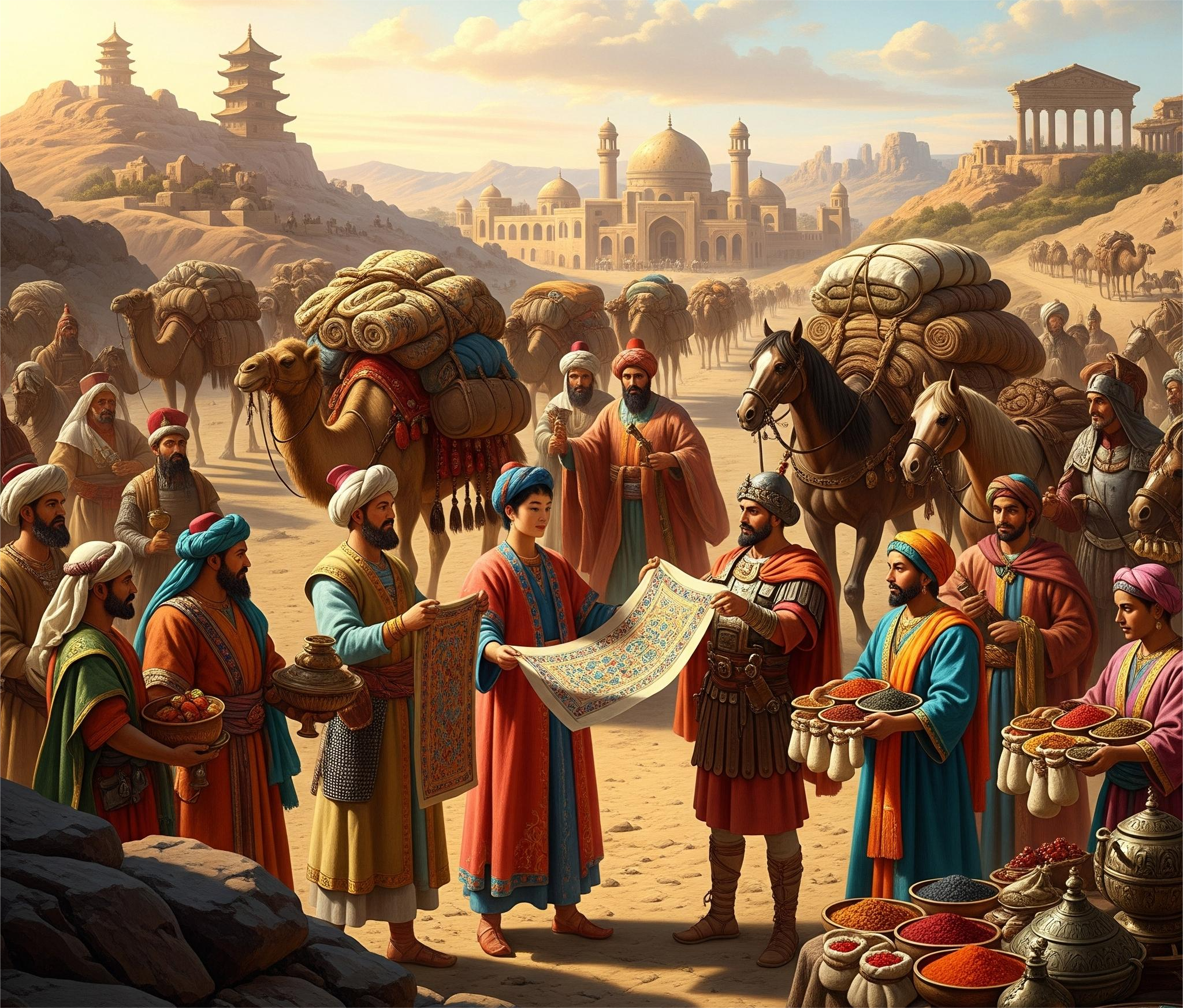Spanning thousands of miles across deserts, mountains, and seas, the Silk Road was far more than a trade network—it was a transformative force that wove together the destinies of some of the most influential civilizations in human history. From the Han dynasty of China to the Roman Empire and later Islamic caliphates, the Silk Road fostered economic prosperity, cultural exchange, technological innovation, and even the spread of religions.
What Was the Silk Road?
Contrary to the singular term, the Silk Road refers to a vast network of overland and maritime trade routes that connected East Asia with the Mediterranean world.
Timeframe: Flourished between the 2nd century BCE and the 15th century CE.
Geography: Spanned China, Central Asia, India, Persia, the Arabian Peninsula, and into Europe.
Origins: Traditionally traced to when Han dynasty diplomat Zhang Qian explored Central Asia in the 2nd century BCE and opened trade with western peoples.
Though silk was a highly prized commodity—hence the name—these routes carried much more than fabric.
Major Routes of the Silk Road
Land Routes (Transcontinental)
The overland Silk Road began in Xi’an, China, and stretched through the Taklamakan Desert, Persia, and into the Levant.
Key cities: Kashgar, Samarkand, Merv, Baghdad, Damascus.
Maritime Silk Road
Connected Chinese ports like Guangzhou with Southeast Asia, India, the Arabian Peninsula, and East Africa.
Utilized monsoon winds for sea travel.
Goods Traded Along the Silk Road
Trade was dynamic and multidirectional. Goods changed hands multiple times before reaching their final destination.
From East to West:
Silk (the most iconic good)
Porcelain
Gunpowder
Paper
Tea
Spices
From West to East:
Horses
Glassware
Precious metals
Wool and linen
Grapes and wine
Ivory and incense
Cultural Exchange and the Spread of Ideas
Perhaps more significant than material goods was the exchange of ideas, technologies, languages, and religions.
Spread of Writing and Science
Paper-making, originating in China, traveled westward and revolutionized communication in the Islamic world and Europe.
Arabic numerals, astronomy, medicine, and mathematics moved along these routes, especially during the Islamic Golden Age.
Religious Transmission
The Silk Road served as a major artery for the spread of religions:
Buddhism spread from India to China, Korea, and Japan, carried by monks and missionaries.
Christianity and Zoroastrianism also moved eastward.
Islam expanded rapidly through Central Asia via trade and conquest.
Art and Aesthetic Fusion
Buddhist cave temples like those at Dunhuang (China) reflect Greco-Roman influences brought by Central Asian artists.
Persian and Indian motifs appeared on Chinese ceramics, while Chinese motifs appeared in Roman textiles.
Political and Diplomatic Impact
Trade along the Silk Road often required political cooperation, or at least toleration, between empires.
The Han Dynasty and Roman Empire indirectly communicated via intermediaries in Central Asia.
The Pax Mongolica (Mongol Peace) in the 13th century CE allowed unprecedented safe passage for merchants, ambassadors, and travelers like Marco Polo.
Cities along the road became melting pots of culture and diplomacy, such as Samarkand and Baghdad.
Risks and Dangers of the Silk Road
Traveling the Silk Road was arduous and often perilous:
Geographic Challenges: Deserts (e.g., Taklamakan), mountains (e.g., Pamirs), and harsh climates.
Banditry and Raids: Merchants often required armed protection.
Political Instability: Wars and invasions disrupted trade.
Yet these very difficulties fostered innovation in caravan management, urban development, and intercultural cooperation.
Unintended Consequences: The Spread of Disease
While trade and ideas thrived, so did pathogens.
The Silk Road was a major vector for the spread of the Black Death (14th century), likely originating in Central Asia and traveling west via both land and sea routes.
Diseases moved as efficiently as ideas—altering populations and societies on a massive scale.
Decline and Legacy
By the 15th century, the Silk Road began to wane:
The rise of maritime trade routes, especially after European explorations, shifted commerce to the seas.
The fall of key empires (e.g., Mongols, Byzantines) fragmented the security of overland routes.
Yet the cultural and technological legacy of the Silk Road persisted for centuries, shaping the Renaissance and the modern world.







